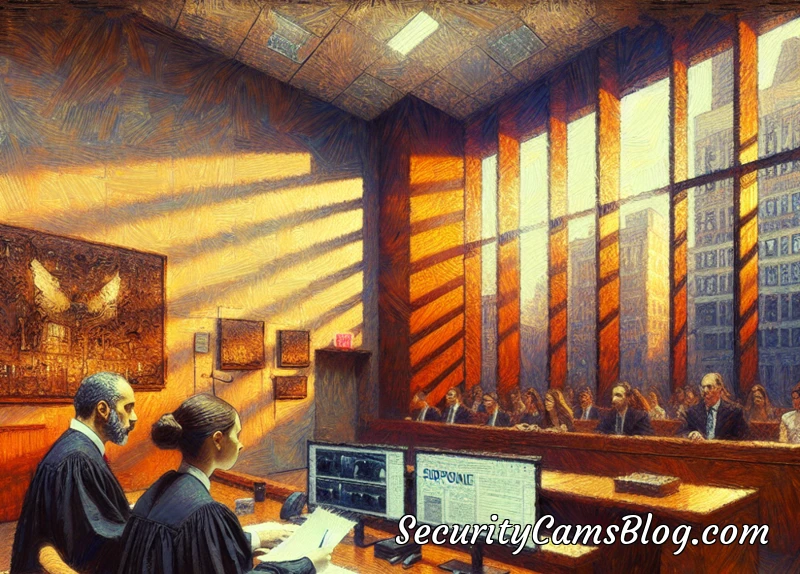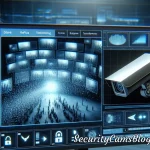Introduction
Video surveillance has become a common sight in many public and private spaces. With the increasing prevalence of this technology, it’s no surprise that video evidence is being requested and used in legal proceedings more frequently than ever before. However, obtaining this evidence can be a complex and time-consuming process. In this article, we will explore the steps involved in subpoenaing video surveillance, as well as some best practices to keep in mind.
What is a Subpoena?
A subpoena is a legal document issued by a court or other competent authority, commanding a person to do one of several things: appear at a certain time and place for a deposition or trial, produce documents or other tangible evidence, or testify in a case. Failure to comply with a subpoena can result in serious consequences, including fines and even imprisonment.
When is a Subpoena for Video Surveillance Necessary?
A subpoena for video surveillance may be necessary in a variety of legal matters, such as criminal cases, personal injury lawsuits, or employment disputes. For example, if you are the victim of a crime and there is video evidence of the incident, you may need to subpoena the footage to use as evidence in court. Similarly, if you are involved in a car accident and there is a traffic camera or surveillance camera that captured the incident, you may need to subpoena the footage to support your claim.
Factors to Consider Before Subpoenaing Video Surveillance
Before subpoenaing video surveillance, there are several factors to consider. First, you should determine whether the video evidence is even necessary for your case. If the footage is unlikely to provide any useful information or if it is not admissible in court, it may not be worth the effort to subpoena it.
Second, you should consider the cost and feasibility of obtaining the video evidence. Subpoenaing video surveillance can be a time-consuming and expensive process, especially if the footage is held by a third party. You may need to hire a lawyer or investigator to help you navigate the process and ensure that the subpoena is served correctly.
Finally, you should be aware of any legal restrictions or limitations on subpoenaing video surveillance. For example, some states have laws that prohibit the use of surveillance cameras in certain places, such as bathrooms or locker rooms. If the video evidence was obtained illegally or in violation of privacy laws, it may not be admissible in court.
How to Subpoena Video Surveillance

The process for subpoenaing video surveillance varies depending on the jurisdiction and the circumstances of the case. However, there are some general steps that you can follow:
Identify the Source of the Video Evidence
The first step in subpoenaing video surveillance is to identify the source of the footage. This may be a government agency, a private business, or an individual. Once you have identified the source, you can determine whether a subpoena is necessary and how to serve it.
Determine the Legal Requirements for Subpoenaing Video Surveillance
The next step is to determine the legal requirements for subpoenaing video surveillance in your jurisdiction. This may include finding out whether you need to obtain a court order or if a subpoena is sufficient. You should also familiarize yourself with any rules or procedures for serving the subpoena and responding to any objections or challenges.
Prepare and Serve the Subpoena
Once you have determined the legal requirements, you can prepare and serve the subpoena. This may involve working with a lawyer or process server to ensure that the subpoena is served correctly and in a timely manner. You should also provide any necessary information or instructions to the person or entity that is being subpoenaed, such as the deadline for producing the video evidence and any specific requirements for formatting or delivery.
Follow Up and Respond to Objections or Challenges
After serving the subpoena, you should follow up to ensure that the video evidence is produced in a timely manner. If the person or entity that is being subpoenaed objects or challenges the subpoena, you may need to respond in writing or appear in court to argue your case. You should also be prepared to pay any fees or costs associated with producing the video evidence, such as copying or shipping costs.
Best Practices for Subpoenaing Video Surveillance
Act Quickly and Respect Deadlines
When it comes to subpoenaing video surveillance, time is of the essence. You should act quickly to identify the source of the footage and serve the subpoena as soon as possible. This will help ensure that the video evidence is preserved and available for your case. You should also respect any deadlines or timelines set by the court or the person or entity that is being subpoenaed.
Be Specific and Clear in Your Requests
When preparing a subpoena for video surveillance, it is important to be specific and clear in your requests. You should identify the specific footage that you are seeking, the time and date of the recording, and any other relevant details. This will help ensure that the person or entity that is being subpoenaed understands your request and can produce the necessary evidence.
Consider Privacy Concerns
When subpoenaing video surveillance, it is important to consider privacy concerns. You should only request footage that is relevant to your case and necessary for your argument. You should also be mindful of any laws or regulations that protect privacy, such as those that prohibit the use of surveillance cameras in certain places. If the video evidence contains sensitive or confidential information, you may need to take additional steps to protect the privacy of the individuals involved.
Conclusion
Subpoenaing video surveillance can be a complex and time-consuming process, but it is often necessary to obtain crucial evidence for legal proceedings. By understanding the basics of subpoenas and following best practices, you can ensure that the process goes smoothly and that you obtain the evidence you need. Remember to act quickly, be specific and clear in your requests, and consider privacy concerns. With these tips in mind, you can effectively subpoena video surveillance and build a strong case.







